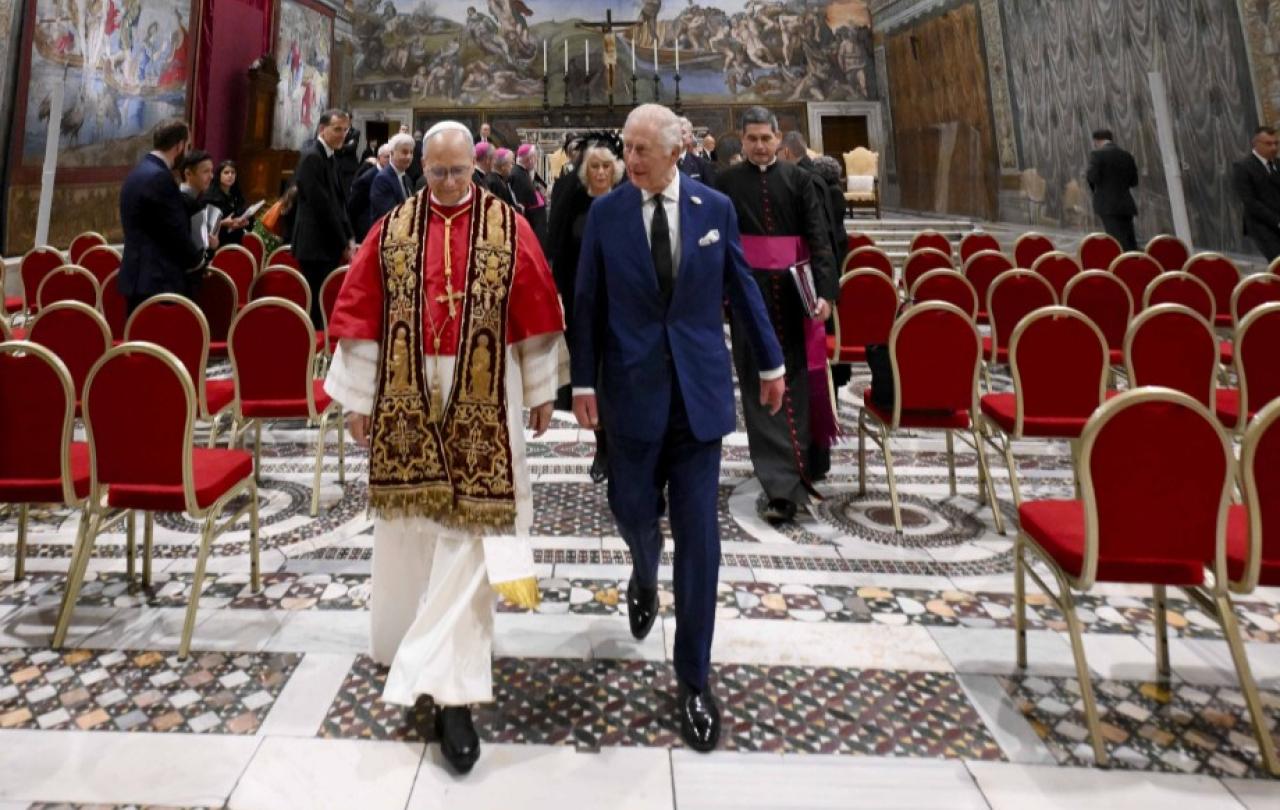
“Madam, those that are about to die salute you.”
Words attributed to Roman captives and criminals fated to die before the emperor, were used (ironically) by Councillor Kieron Mallon at the last Council meeting of this term of Oxfordshire County Council last week. ‘Madam’ was the Council’s Chair, wishing everyone well. Elections are on the way.
Easter is also on the way, and in the period leading up to the commemoration of the resurrection of Christ from the dead, nearly 2,000 years ago, Christians are invited to think about their own mortality. ‘Remember that you are dust, and to dust you will return’ were words my priest intoned to me as he marked a cross with ashes on my forehead on 5 March, Ash Wednesday.
Ash already emblemizes a belief in rebirth, even before the power of the story of the Christ’s resurrection is considered. I for one felt immensely hopeful on Ash Wednesday this year. Having just secured a new place to call home, and one year into my job as Democratic Services Officer to Oxfordshire County Council, looking after the likes of Councillor Mallon, life felt pretty swell.
My priest and I spoke about the ways in which death and hope are joined at the hip. The ancient Greeks believed that a phoenix obtains new life by rising from the ashes of the one before it. So do we. I have found myself, so far this year, visiting people and places I strongly associate with former lives, from friends I lived with as an undergraduate to a town I went on holiday as a child to the beach where my late Granny’s ashes were scattered. ‘Ashes to ashes, dust to dust.’
More specifically, the Christian believes that ‘whoever loses their life for [Christ’s] sake will find it’, in the sense that true self-discovery arises when we let go of the ego, when we allow ourselves to be changed. Thinking about mortality, therefore, changes life, in so far as we are better equipped to surrender and salute the Saviour. That worldview has shaped public servants in years gone-by.
An overwhelming majority of people in the course of human history have been forgotten.
I recently heard Dr Ian McGilchrist, the psychiatrist, describe the desire to control everything in life as the ‘besetting sin’ of the age in which we live. The desire to be remembered, rather than reborn, captures it better in my mind. Mankind has always wanted to remain in control. Souls will always be reluctant to surrender. However, what we have now is a world in which people feel uniquely entitled to make impact.
People feel that they have a right to be remembered, but it is not so. An overwhelming majority of people in the course of human history have been forgotten. Moreover, the past can be especially compelling when we have a window into a world in which people did not necessarily expect to make any kind of worldly impact whatsoever. Theirs was a happier place.
The twentieth century was described by Philip Rieff in 1966 in terms of the ‘Triumph of the Therapeutic’. He wrote, ‘Religious man was born to be saved’, but ‘psychological man is born to be pleased.’ ‘Psychological man may be going nowhere, but he aims to achieve a certain speed and certainty in going’. Therapy enables that objective. But therapy to what end?
Counselling can be construed as a device to regain control. The counselled, if fixed, can go about trying to change the world, trying to make an impact, resuming the rather pleasing but never-ending mission to be remembered. For anyone of a religious sensibility, however, that is not the objective. Rather, new life is given only for the whole resurrection story in our own lives to be repeated.
Around the time that Rieff wrote his book, the historian Herbert Butterfield, a Christian, wrote this. ‘Those who lived when the world was static – when the silhouette of the ploughman against the horizon hardly changed in the passage of a thousand years – may have something to teach us, who only know a breathless, rapidly changing world and who seem to be having to pluck what we can from life while running at full speed.’
Social media has surely exacerbated this condition because it connects us to others at the cost of contemplation about what life – and death – really entails. It is a place where we try to evidence to others the impact we are having, where we write our own eulogies and our own epitaphs and have access to the whole world whom we expect to read the same.
Life changes to a much greater extent these days, in this place, than it did for the ploughman in the passage of a thousand years, or captives and criminals in the Roman world, including Jesus Christ who was identified as one such. However, if we can somehow create conditions to focus less on having impact in and on a volatile world, and being someone who ought to be remembered, we will find that we have more hope.
In turn, we will change the world for the better, but despite ourselves, and for me that is what this period leading up to Easter is all about. We may find that others who are about to die salute us too, for the good deeds we have done that may well be forgot.
Celebrate our 2nd birthday!
Since Spring 2023, our readers have enjoyed over 1,000 articles. All for free.
This is made possible through the generosity of our amazing community of supporters.
If you enjoy Seen & Unseen, would you consider making a gift towards our work?
Do so by joining Behind The Seen. Alongside other benefits, you’ll receive an extra fortnightly email from me sharing my reading and reflections on the ideas that are shaping our times.
Graham Tomlin
Editor-in-Chief





